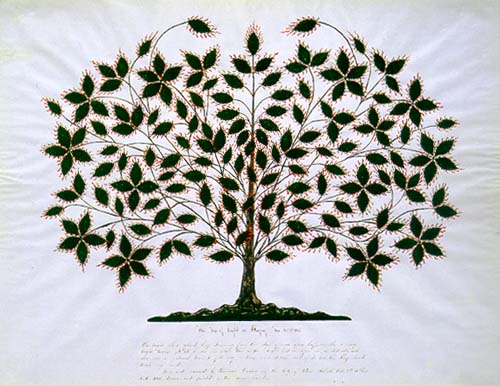
Adam Gopnik's article on the Shakers in the New Yorker is well worth reading, as far as insights into work and spirituality...
What also distinguished the Shakers was their odd join between violent anti-worldliness and thoroughgoing commercial materialism. Monks and monkish communities have, of course, sold goods to the world for a long time, from medieval cheese to Moonie cappuccinos. But the Shakers, faced with the need to support large communities, worked particularly hard to manufacture things for money. Many of the objects that we think of as archetypally Shaker—the long oval boxes with their lovely triple folds, the clean brooms and chairs—were designed and made largely for outside sale. With most tribes and sects that we look to as artistic innovators, the line between cult object and commodity product—between the true African fetish and airport art—is, if often far from sharp, at least tenable. It wasn’t with the Shakers. Shaker style was a commodity almost as soon as Shakerism was a cult. Contrary to Thomas Merton’s romantic assertion that each Shaker chair was made as though no other chair had been made before, Shaker chairs and other wooden objects were made in semi-industrial conditions for a growing middle-class market.ought to drink from. By the mid-nineteenth century, “Shaker” had become a brand name.
It is here, ironically, in the need to make things to sell to other people, that the first stirrings of a distinct style begin. This is not to say that the objects were made insincerely, or that Shakerism in design was a scam. The built-in cupboards and chairs and ladders constructed only for other Shakers, in Shaker communities, are made in the same spirit as the things for sale. The point is that no line was drawn the other way around, either: what was made for sale looked like what was made for sacred. The urge to make consumer goods is, after all, one of the keenest spiritual disciplines that an ascetic can face: it forces spirit to take form. An ascetic drinking tea from a cup decides not to care what kind of cup he’s drinking from; an ascetic forced to make a cup has to ask what kind of cup he
...but frankly, the celibacy thing concerns me.
What kind of work ought we to be doing? Whose lives are affected by our work? Even with families of the usual kind these are good questions.
One also wonders what Shakers would have done, other than say, bake pies, in a service economy. But I don't think they'd have gone the Thomas Kinkade route. Maybe the SF Zen center route (I have a problem with "underpaid" whoever, wherever; there ought to be, if the money's not there, a real quid pro quo).
Another bit worth quoting:
As[Michael Downing author of “Shoes Outside the Door: Desire, Devotion, and Excess at San Francisco Zen Center,”] documents, its latest incarnation has been the Zen experience—which is uncannily like the Shaker experience, and which also involved the implantation of a slightly misunderstood alien dogma, and an immense outpouring of American spiritual yearning, a taste for commercial prosperity on the part of its leaders, and an inability to figure out what the hell to do about sex. As the Shakers made a revolution in American objects, American Zen made a revolution in American cooking, giving vegetarian food dignity. And, when the communities went into crisis, first the plates, and then the food, were what was left.
Which isn't quite true; the Greyston Bakery's still quite alive and well, even if the San Francisco Zen Center's problems were quite severe for a while.
The folks at Tremper Mountain have been doing their thing, and some of us folks who are family people are integrating work into our own lives. And of course, everybody's always asking, "What the hell do we do about sex?"
No comments:
Post a Comment